
'Not even the best F1 driver in his family' - Pain of being the other Schumacher
He has always been overshadowed by his older brother but Ralf Schumacher’s 50-year story is more layered, and more human, than the stats alone suggest, says Matt Bishop
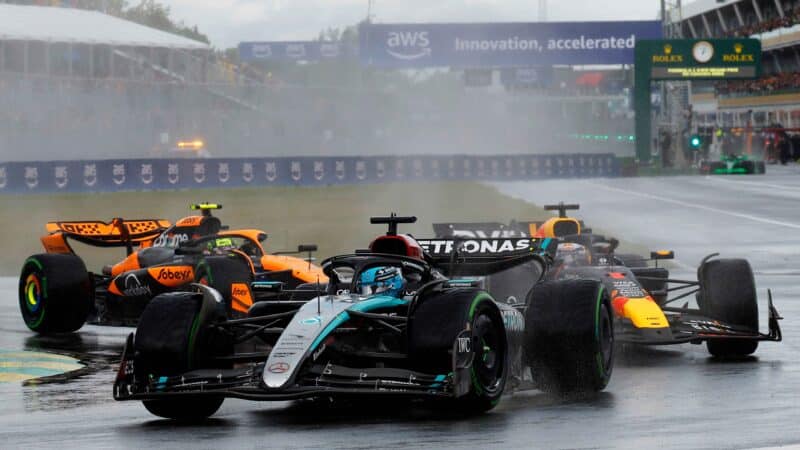
From wet tyres to safety cars: here is how F1 works
Chris Graythen/Getty Images
New to Formula 1? Our guide to how F1 works is designed to give you the basics to help you follow a race and decode the jargon, so you’ll be strategising overcuts and nodding at the mention of VSC deployments in no time!
Over the course of a race weekend, a litany of terms can be used by those in the commentary booth and on the pitwall. So before tuning into the next grand prix, take a quick scan of the ten key points below to find out everything you need to know about motor sport’s top echelon.

Both F1 champions are currently dominated by Red Bull
Gongora/NurPhoto via Getty
The ultimate goal in F1 is to become a world champion, and there are two prizes on offer: one for drivers and another for teams, which are also referred to as constructors.
This year, the championship is made up of 24 races — known as grands prix — where all 20 drivers battle for the prestige of winning, as well as for the points that will eventually decide that season’s champion.
While the drivers’ title carries the highest profile, the championship for teams, is just as significant.
Each team has two drivers and their points are pooled to determine the championship-winning constructor. As with the drivers’ championship, the team with the most points at the end of the season is awarded the title.
The higher a team finishes in the constructors’ standings, the more they receive in prize money. But high-ranking teams are also penalised with a reduction in the amount of aerodynamic testing that they can carry out on their current and future cars in a bid to help teams with slower cars to catch up.
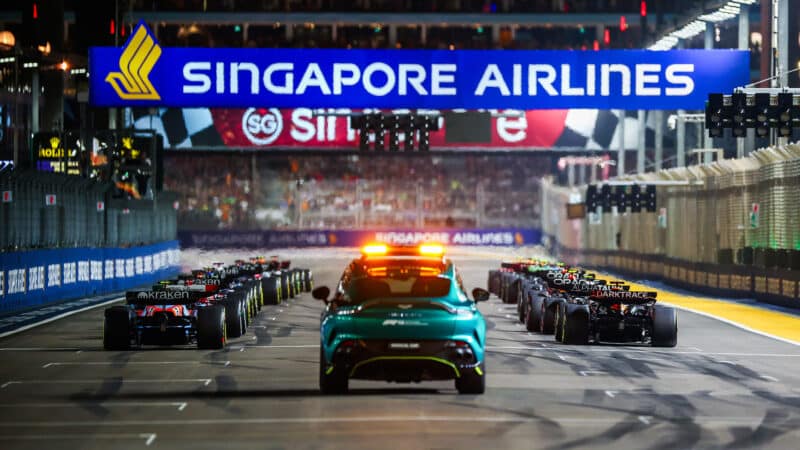
F1 is an exclusive club and current teams are fighting to keep it that way
Getty Images
The ten teams, each with two cars, have all been competing in Formula 1 for several years. Ferrari is the longest-standing constructor, having raced in every season since the very first Formula 1 world championship in 1950. McLaren and Williams have been in F1 for more than 40 years.
As constructors, each team builds their own car to a set of standard regulations, making each grand prix a test of innovative design as much — if not more — than driver talent. This can lead to one team’s car having a significant advantage over the rest, as we have seen in recent years with Red Bull.
Some teams such as Mercedes, Ferrari and Alpine have divisions that make the car’s power unit (hybrid engines) while the rest are allowed to buy in the power units from other teams or companies that just make power units, like Honda.
Each team has committed to being in F1 long-term and is eligible for a share of the profits generated by F1 — including income from sponsors, circuits which pay to host grands prix, and broadcasters that pay to show them — as well as prize money.
It makes owning an F1 team lucrative, and it’s extremely difficult to join them. While in theory, up to 12 teams can compete and several have applied to become constructors — notably the American Andretti Autosport bid — none have been successful. This is partly down to opposition from existing teams which are reluctant to give anybody else a share of F1’s profits.
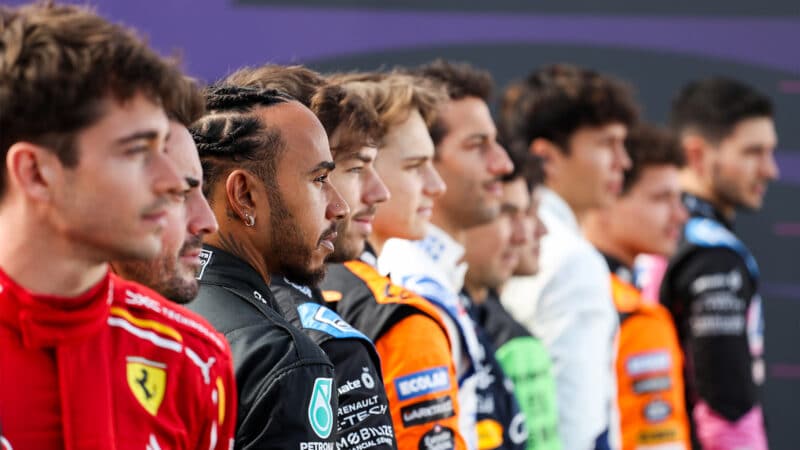
The greatest drivers in the world, race together on a single grid
Getty Images
Each team runs two full-time F1 drivers, meaning there are 20 on the current grid: from multiple world champions in Max Verstappen, Lewis Hamilton and Fernando Alonso to young up-and-comers in Oscar Piastri and Logan Sargeant. You can find the full list of the 2024 F1 drivers here.
Each one has generally worked their way up through the ranks using the traditional motor sport ladder: starting from as young as 5 years-old in go-karts before moving up into categories such as Formula 4 and Formula 3 where they hone their skills in single-seater cars with less power and performance.
From there most drivers dreaming of winning grands prix will make the jump to Formula 2 — which is the series directly under F1 — where they’ll aim to prove their speed, consistency and racecraft over the course of an 14-race season. Former winners of the series include many past and current F1 drivers including Charles Leclerc, George Russell, Nyck de Vries, Mick Schumacher and Oscar Piastri.
Before being promoted to F1, a driver must earn their superlicence — which is effectively their qualification to race in the series — by accumulating 40 points from other series. This is done by winning races or placing high in season standings, but it’s no guarantee of an F1 place given the limited spaces and intense competition.
The ourney to the top typically costs around £18m, so all but the super-wealthy must hope that, early in their career, they catch the attention of a team or sponsor that can bankroll their climb up the racing ladder.
Each team also fields reserve drivers who are on standby at every grand prix across the season just in case a regular driver needs to be replaced due to an illness or injury. You can see the full list of reserve drivers for every team in 2024 here.
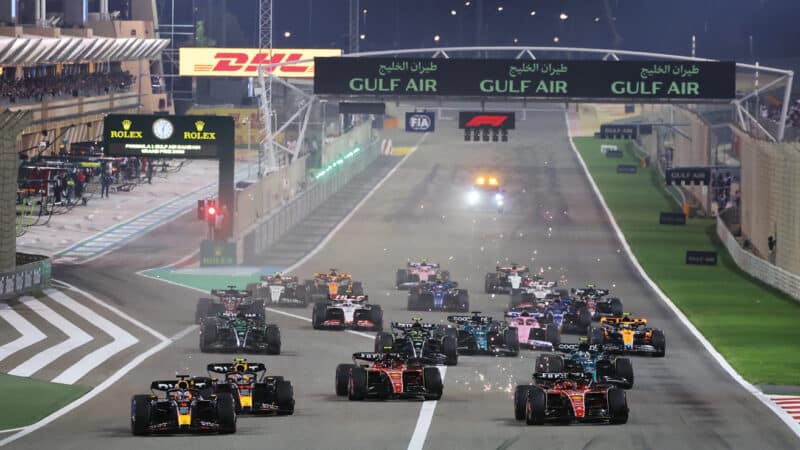
Last year’s F1 opener in Bahrain effectively set out the stall for the season ahead – a Red Bull 1-2
Grand Prix Photo
The traditional F1 race weekend normally takes place over three days: Friday, Saturday and Sunday, incorporating practice, qualifying and the grand prix itself.
In most cases, Friday features two 60-minute practice sessions that are mainly used to set the car up for each particular circuit by adjusting elements such as suspension for optimum performance in qualifying and the race.
A final practice session is held on Saturday morning. These sessions have fewer restrictions than qualifying and the race, so are known as ‘free’ practice.
Qualifying lasts an hour and is used to determine the order in which cars start the grand prix in a two-by-two grid format. It is separated into three segments:
Q1 All 20 cars have one 18 minute session to set the fastest single lap that they can. The slowest five are eliminated and will start furthest back, the slowest in 20th spot and the fastest eliminee in 16th.
Q2 The remaining 15 cars have 15 minutes to again set the fastest lap they can. Once more, the slowest five — based only on their Q2 times — are eliminated, and will start the race between 11th and 15th places.
Q3 This is the final shootout for the top ten slots on the grid, with each car striving to start at the front — pole position. The remaining cars have just ten minutes to set the fastest lap and only the times from this Q3 session count towards their grid position.
Sunday sees the cars line up on the grid, then proceed slowly on a warm-up lap, returning to the grid for the race start. Once each car has come to a halt, the series of five lights at the start/finish line illuminate in turn. When they all go out simultaneously the race is on — hence Sky F1 commentator David Croft’s trademark line: “It’s lights out and away we go!”
The length of F1 grands prix is decided by an old formula: 305 (the minimum distance of a grand prix in kilometres) divided by the length of one lap (also in kilometres). For example, the grand prix circuit at Silverstone is 5.891km long. 305 divided by that distance gives us 51.77, which rounded up sets the British Grand Prix at 52 laps.
Six rounds a season are designated as sprint weekends, giving drivers an extra opportunity to score championship points and spectators more competitive action.
There’s only one practice session on the Friday; the second one is replaced by sprint qualifying, which is slightly shorter but works in the same way as grand prix qualifying.
Then, instead of a Saturday practice session, there’s a sprint race, which runs for a third of the distance of the grand prix. The top eight drivers earn championship points.
The weekend then reverts to a standard format, with qualifying followed by the full grand prix. This year, sprints are being held in China, Miami, Austria, Austin, Brazil and Qatar.
Read more on how F1 sprint races work
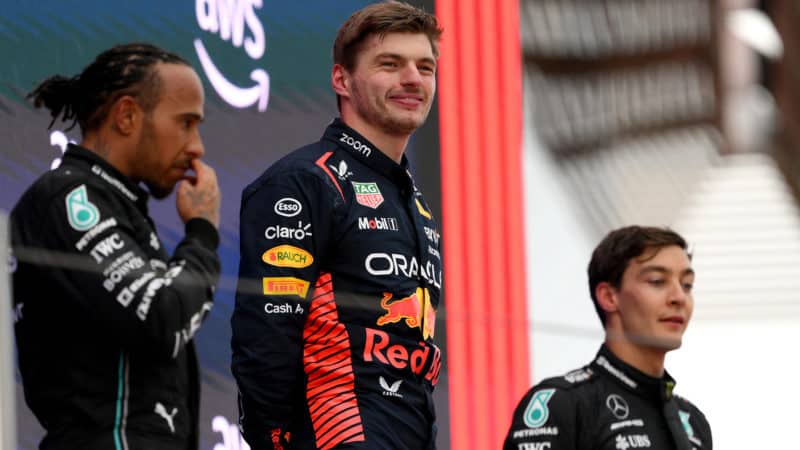
How many points are awarded in F1 races?
Getty Images via Red Bull
In a grand prix, the top ten finishing drivers score points: 25 for first, 18 for second, 15 for third, 12 for fourth, 10 for fifth, 8 for sixth, 6 for seventh, 4 for eighth, 2 for ninth and 1 for tenth. A driver can also score an additional point for setting the fastest lap during the course of a race.
In a sprint race, the top eight finishing drivers score points, although due to the shorter distance completed the reward is reduced, with eight points awarded to first descending to 1 point for eighth.
Read more on the F1 points system
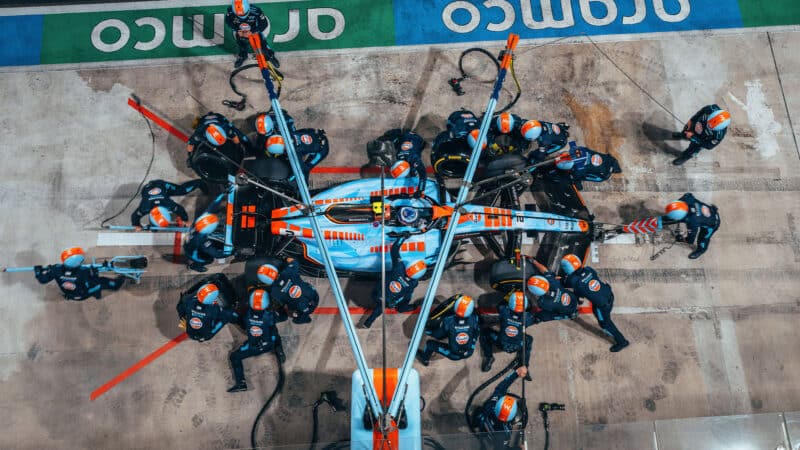
22 team members to change four tyres…
Williams
Every driver must complete at least one pitstop over the course of a race, in which they will change tyres which have been worn down and lost grip. The switch to fresher rubber then allows them to keep up more consistent lap times and challenge for higher positions. Cars cannot be refuelled mid-race.
There are five types of tyre which drivers can use during a race — depending on the conditions.
In the dry, they can use the high-grip yet high-wearing soft tyre (red-walled), the slow-wearing yet slower-speed hard tyre (white-walled) or the yellow-walled medium tyre which provides a middle ground.
Depending on the severity of the wet weather conditions, they can either use the intermediate (green-walled tyre) or the extreme blue-walled wet tyre which is only often used by teams when made mandatory by the race director.
Each driver must use at least two different tyre compounds per grand prix but this rule does not apply in wet conditions.
Before the race, team strategists calculate the optimum compounds to use. On some circuits, it may be better to run a series of fast stints on soft tyres, with the need to stop twice or more. On others, the hard tyre might be a better choice for most of the race, enabling consistent lap times over a long period, with just one stop required.
Most races see several mentions of the overcut and undercut, which are common pitstop strategies used by teams in an attempt to gain positions by either pitting earlier or later than the car ahead.
The overcut is often used when a driver is stuck behind a slower car and unable to overtake. When the lead car (we’ll call it No1) makes its pitstop, the other one (No2) stays out longer, giving them a chance to run in clear air at their maximum pace — as long as their tyres still have enough grip.
The aim is for the No2 car to increase the gap over the No1 car, which is now behind it. If it all works as planned, this gives the No2 car enough time to make its own pitstop for fresh tyres and emerge in front of its rival.
In contrast the undercut is where one car (No2) pits before their rival. This puts them on a new set of tyres, while the car ahead (No1) is on older, slower rubber. In this scenario, No2 will attempt to lap faster and reduce the gap, so that when No1 pits, it comes out behind No2.
Clearly, the key to success in both scenarios is ensuring that you have a pace advantage over a rival. This is dependent on tyre wear which varies from driver to driver and from circuit to circuit.
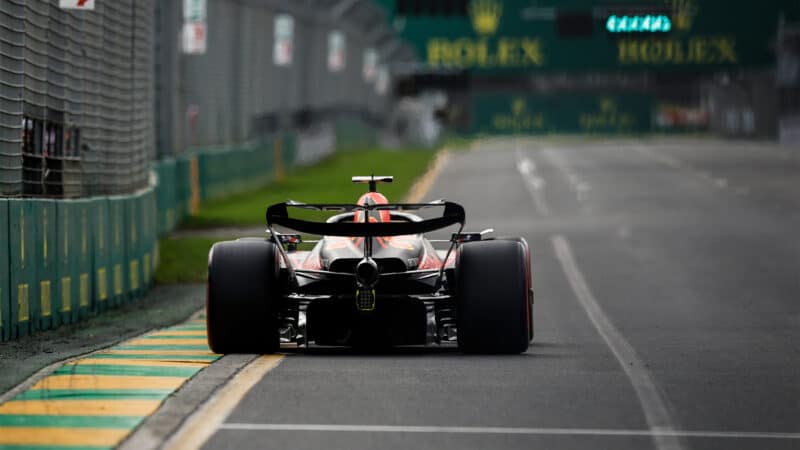
Red Bull’s victory is often inevitable: so why delay it?
Getty Images
Modern cars struggle to follow each other closely because they are so reliant on aerodynamics. A lead car cuts through the free-flowing air in front of it, but its wheels and wings churn that air up and send it spiralling in various directions. This affects the aerodynamic efficiency of any car following closely, reducing its downforce and therefore its cornering speed.
That’s why, in 2011, F1 introduced the drag reduction system (DRS) to assist overtaking.
Just before straighter, flat-out sections of each F1 circuit, a detection point records whether a car is within a second of the one in front. If so, then the driver is able to use DRS moments later by pressing a steering wheel button when they reach the ‘activation zone’. This raises a flap on the rear wing, significantly reducing aerodynamic drag, increasing the car’s maximum speed, and improving the chances of overtaking.
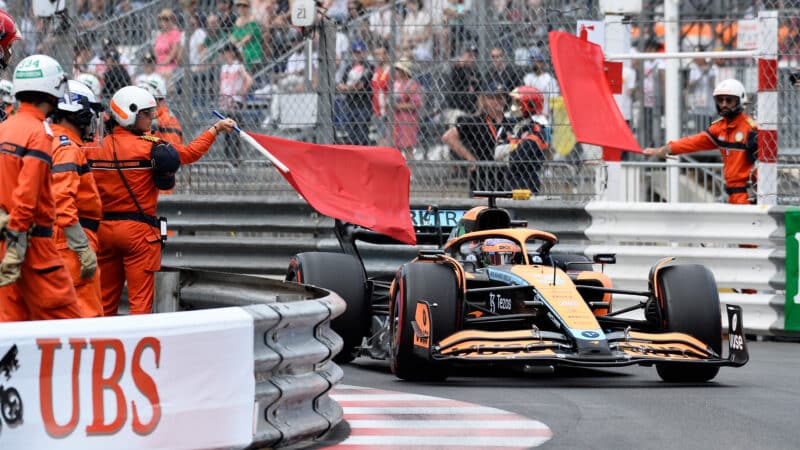
Red flags waving — what does it mean?
Grand Prix Photo
Several different flags are used over the course of an F1 weekend, including the best-known of them all — the black and white chequered flag that signifies the end of a race.
However, most others are deployed for safety reasons, either to inform drivers of hazards or require them to take action. Physical flags now tend to be accompanied by bright light panels, which illuminate in the relevant colour.
Yellow flags warn of a hazard in the section ahead. Depending on how many of them there are and how they are waved, drivers may need to slow significantly and cannot overtake until they see a green flag, giving the all-clear for the rest of the track.
Blue flags are also used intensively in races. These alert drivers that they are about to be lapped (when a leading car has such an advantage that it is a full lap ahead of slower cars) and must let the faster car through.
Serious accidents and severe weather can bring out the red flags, which halt the race. Cars return to their garages in the pits until racing can safely resume.
Drivers don’t want to see the black flag, waved specifically for an individual car, which signifies that it has been disqualified for a serious misdemeanour.
Alongside yellow flags, you may also see SC or VSC boards, indicating a safety car period — most commonly after a crash. In this scenario, the cars continue on track, but at a reduced pace to allow the track to be cleared.
Safety car periods take two forms: the virtual safety car (VSC), where cars have a relatively slow target lap time that they must comply with, keeping them all in the same position and reducing risk for marshals working on track. The second is a full safety car — a sports car that the Formula 1 cars must line up behind as they continue driving. This keeps them all bunched up, creating gaps where marshals can work on the track safely.
Here’s a short meaning for each flag used in F1. For a detailed breakdown of when and where each flag could be waved, read out full breakdown here.
| Type of flag | Meaning |
| Green flag | Full racing conditions |
| Yellow flag | Caution ahead — reduce speed |
| Red flag | Session stopped |
| Black flag | Driver disqualified |
| Black and white flag | Driver warning |
| Black and orange flag | Mechanical issue — driver must return to the pit-lane |
| White flag | Warning — stationary vehicle ahead |
| Red and orange flag | Change of surface grip |
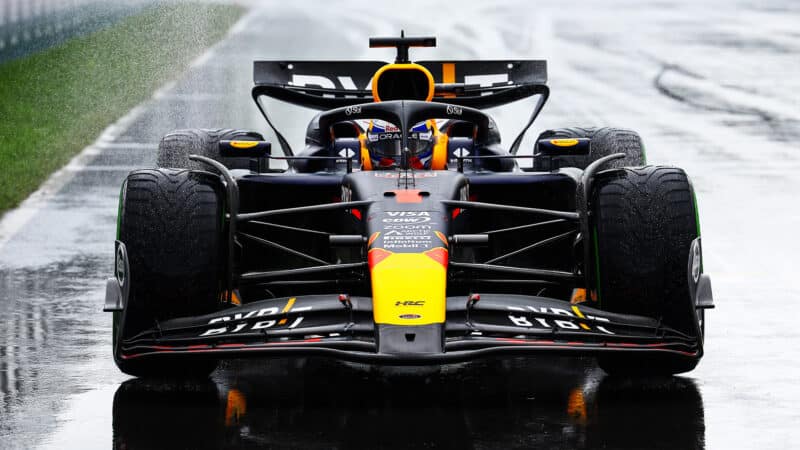
Aerodynamics are the main source of performance in 2024
Red Bull
Aerodynamics play a major part in both how an F1 car looks and how well it performs. The shape of the car, its low proximity to the ground and the wings at the front and the rear combine to produce downforce, where high-pressure air pushes down on the car, increasing grip and enabling higher corner speeds.
While F1 cars are capable of more than 200mph in a straight line, it’s their speed in corners that make them such ultimate racing machines.
Teams of aerodynamicists at each team are looking to build a smooth car with low drag on straights, but which generates high levels of downforce in corners. The design of F1 cars is tightly regulated, so every area is scrutinised and improved in the hope that small improvements will add up to a significant advantage on the track.
It’s such a key element of modern F1 that the best designers are superstars in their own right — such as Red Bull’s Adrian Newey.
The main way that cars generate downforce is to send air through tunnels underneath the car, shaped to accelerate the airflow and reduce pressure underneath the car, which sucks the car down onto the surface — known as ground effect. The front and rear wings are also shaped to generate downforce.
F1 has been radically altered in recent years with the introduction of a cost cap.
Previously, teams typically spent every available penny they had on improving performance — a ruinous arms race that gave the richest teams an advantage, and left the poorer, independent ones with little hope of ever catching up.
The situation led to teams going bankrupt, major manufacturers pulling out of the sport, and reduced competitiveness. That has now changed completely with a cap that limits each team to a set budget per season, currently set at $135m.
This applies to most salaries, car development costs and race weekends, including transport, but does not apply to the cost of buying or developing the power unit. Drivers’ salaries are excluded, as are those of each team’s three other highest-paid staff members.
It has helped to level the playing field, but also transformed the fortunes of each team. F1’s increased popularity has increased its revenue, some of which is divided between the teams, which also have their own sponsorship now make a profit.

He has always been overshadowed by his older brother but Ralf Schumacher’s 50-year story is more layered, and more human, than the stats alone suggest, says Matt Bishop

Cadillac's Formula 1 entry was approved just 364 days before its first grand prix weekend. We took a look inside its Silverstone base to find out how it's building a brand new team from scratch
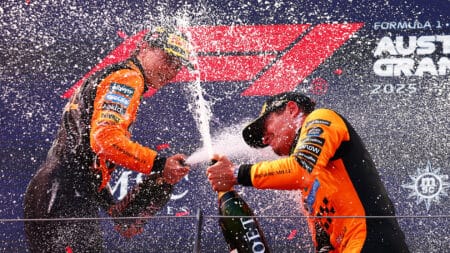
Describing this year's championship race as a 'battle' might be slightly over-egging it, writes James Elson
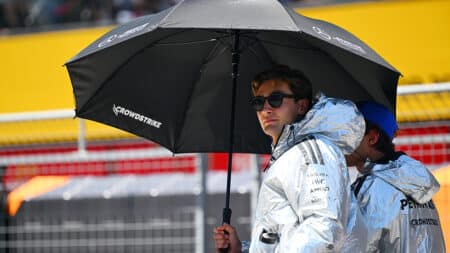
You had to read between the lines at the 2025 Austrian Grand Prix as George Russell dropped hints over about his dissatisfaction, and F1 sent a message to FIA president Mohammed Ben Sulayem